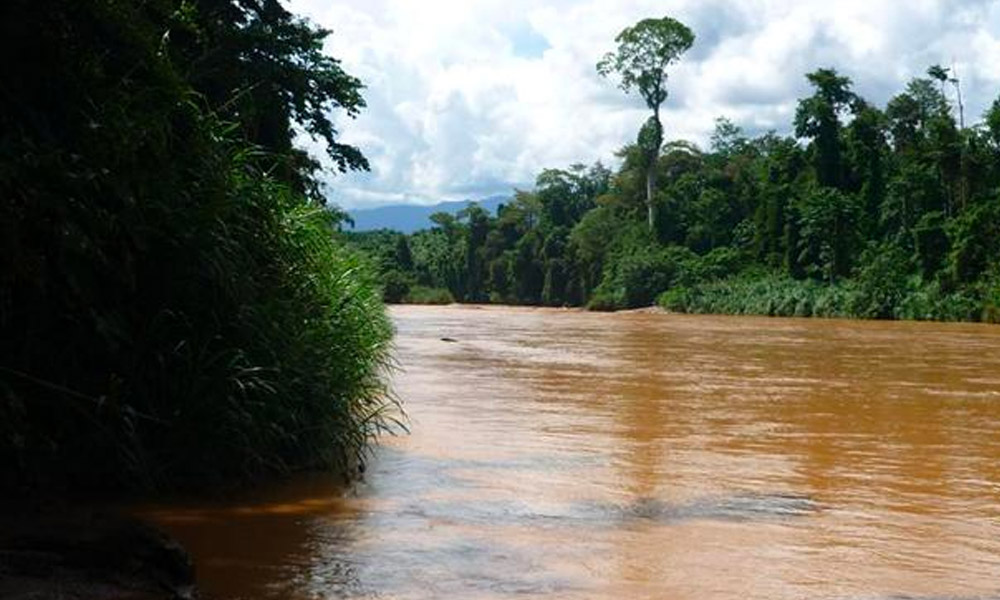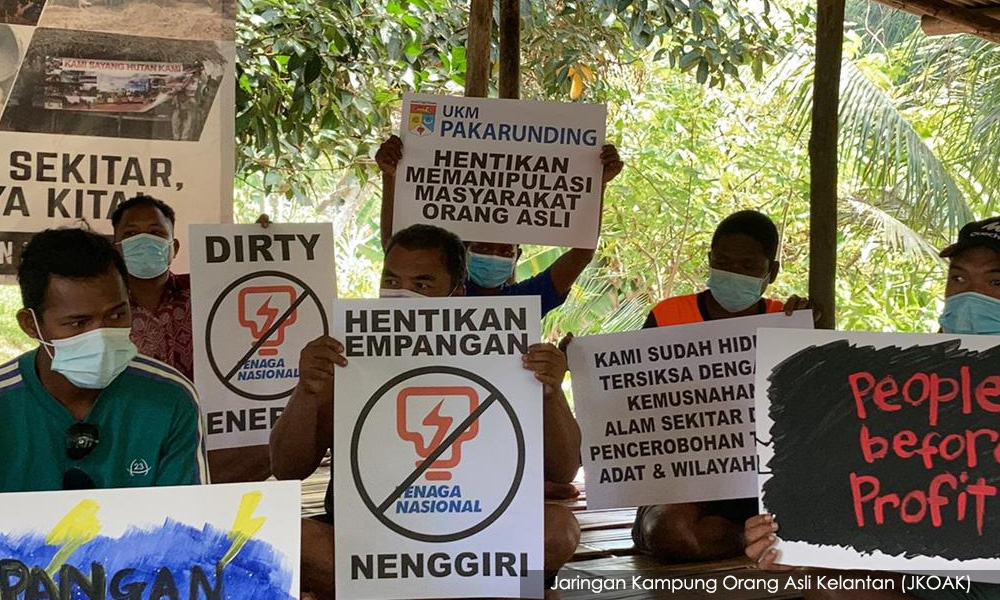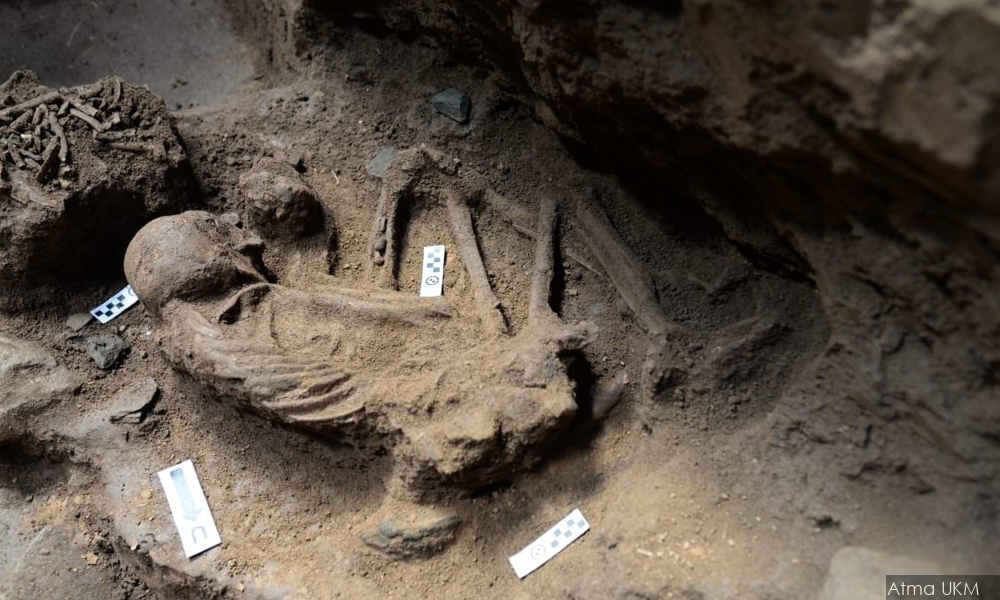Proponents of the Nenggiri Hydroelectric Dam in Gua Musang have repeatedly assured that only three Orang Asli villages would be permanently impacted once the waters rise.
Such assurances, however, have done little to convince critics - even those whose villages are not expected to be forever drowned by the dam.
For Nora Kantin, it was only a matter of time before her village - Kampung Angkek, also known as Kampung Podek - became unlivable.
“We were told that our village will not be destroyed but looking at the location of our village, I know it will be eventually destroyed.
“We are located at the lower land,” she told Malaysiakini when contacted.
If it’s not the village that is destroyed, then their farmlands could suffer, the Jaringan Orang Asli Wilayah Kampung Angkek chairperson said.
“I have seen what happened to the Orang Asli at a hydroelectric dam in Perak. They are now living near the river with a smaller area for farming. Is that a good thing for us?” she said.

As for claims that the dam would help with water supply and irrigation in the Orang Asli villages, Nora said providing water pipes would have been more helpful to the community.
Separately, Persatuan Aktivis Sahabat Alam (Kuasa) president Hafizudin Nasarudin expressed concern over the lack of an alternative road for the Orang Asli to the nearest town - Kuala Betis - once the main road is underwater.
“The project will sink the main road so it will cost the villagers an extra two to three hours of travelling, along with spending more money on petrol and renting four-wheel drives,” he said.
‘Nobody asked us’
Kelantan Orang Asli Villages Coalition representative Mustafa Along previously told Malaysiakini that there are hundreds of settlements across eight zones - Wias, Pasik, Gob, Simpor, Tohoi, Bihai, Angkek, and Depak - located along the Nenggiri River.
From these eight zones, three villages - Pos Pulat, Pos Tohoi, and Kampung Kuala Wias - are expected to be fully submerged once the Nenggiri dam is fully operational by 2027.
This will displace 1,200 Orang Asli, who have been promised housing in new villages as compensation.
Grassroots activists claim that around 3,000 Orang Asli in Gua Musang - mostly from the Temiar tribe - are actively campaigning against the Nenggiri dam, which began construction in early 2022.
Nora said that many villagers were shocked when they heard statements saying that they agreed with the project.
“No one came to us and discussed it. Suddenly, there are media statements claiming the Orang Asli agrees with the project when the majority of us are against it,” she said.

She was also unaware of the RM200 million government aid allocated to the Orang Asli who are affected by the project.
“I didn’t know about the assistance. But I think the allocation is for those who agree to the project.
Besides generating electricity and supplying water for drinking and irrigation, the Kelantan state government is touting the Nenggiri dam as a means to control flooding and create jobs.
Jobs not be-all, end-all
Gua Musang MP Mohd Azizi Abu Naim, who acknowledged the loss of homes for the Orang Asli, had called on the community to be part of the proposed development because it has a big positive impact on the economy and society.
However, Hafizudin said there is another element that also needs to be considered.
“If we think from an economic (perspective), everything will provide job opportunities, even mining provides jobs. But we need to look at the social and the environmental impact,” he said.
This includes whether or not damage done to the local ecology would end up damaging the dam.

He said that the Nenggiri River and other sub-rivers - which would feed the dam - already have murky water full of sediment due to forest clearing for Musang King durian and oil palm plantations.
“(The sediments) would eventually affect the dam’s water turbine.
“The same situation is already happening at Cameron Highland’s Sultan Abu Bakar hydroelectric dam, which is no longer in operation.
“So, can the Nenggiri dam remain sustainable forever?” he said.
In 2023, the Natural Resources, Environment and Climate Change Ministry (NRECC) revealed that eight dams, including the Sultan Abu Bakar dam, have been damaged and could pose a threat to residents and property in the event of failure.
Hafizudin reiterated and chided those responsible for not just “saving their necks” as the project not only affected the Orang Asli’s livelihood but also their cultural heritage.
Historical site at risk
He also continued to express his concern about the project destroying Gua Cha, where Universiti Kebangsaan researchers found a human skeleton that could be traced back to a prehistoric civilisation that settled in the Nenggiri Valley some 14,000 years ago.

Disputing the claims that Gua Cha will not be affected, he stressed that the cave will be sunk as stated in the environmental impact assessment report.
“The assessments and consultations including the heritage impact assessment were not done thoroughly. So the basis of our rejection is strong,” he said.
Malaysiakini has reached out to Tenaga Nasional Berhad and is awaiting a reply. - Mkini




No comments:
Post a Comment
Note: Only a member of this blog may post a comment.